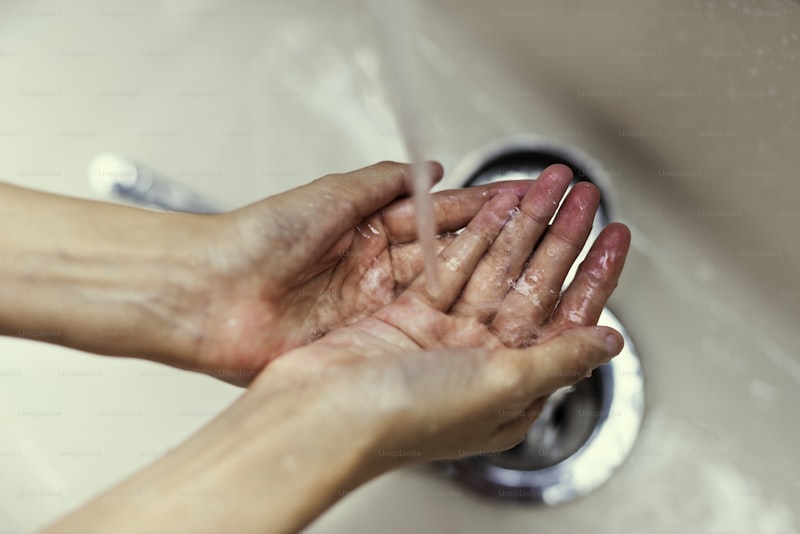Understanding Dry Cleaning vs. Hand Washing: Which Method Is Right for Your Clothes?
Introduction
When it comes to maintaining the quality of our garments, selecting the right cleaning method can significantly affect their longevity. Two common methods are dry cleaning and hand washing. But what are the differences between them? In this article, we will explore Understanding Dry Cleaning vs. Hand Washing, the pros and cons of each method, and tips for keeping your clothes looking their best.
What is Dry Cleaning?
Dry cleaning is a specialized cleaning process that uses chemical solvents instead of water. This method is particularly effective for delicate fabrics that might shrink, warp, or become damaged when exposed to water. Dry cleaning machines utilize a solvent called perchloroethylene (or "perc") to clean garments gently but thoroughly.
Advantages of Dry Cleaning
- Stain Removal: Dry cleaning is highly effective at removing tough stains that water might set in.
- Gentle on Fabrics: It is ideal for delicate fabrics such as silk, wool, and velvet.
- Convenience: Many dry cleaners offer pick-up and delivery services, making it an easy option for busy individuals.
Disadvantages of Dry Cleaning
- Cost: Dry cleaning can be significantly more expensive than hand washing.
- Potential Chemical Exposure: The solvents used in dry cleaning can be harsh and may pose health risks if not used properly.
- Not Eco-Friendly: Many dry cleaning methods contribute to environmental pollution.
What is Hand Washing?
Hand washing is a gentle method of cleaning clothes using water, often accompanied by mild detergents. This method is suitable for fabrics that can withstand moisture and is a great way to preserve the life of your clothes at home.
Advantages of Hand Washing
- Cost-Effective: Hand washing is generally free, requiring only water and detergent.
- Gentle Cleaning: It is safer for delicate fabrics, such as lace and knitted items, which may not fare well in a washing machine or during dry cleaning.
- Environmentally Friendly: Less chemical exposure and more eco-friendly than traditional dry cleaning methods.
Disadvantages of Hand Washing
- Time-Consuming: It can take longer than a quick drop-off at a dry cleaner, especially for larger items.
- Stain Set Risk: If not done correctly, stains may not be adequately removed.
- Physical Labor: Hand washing requires effort, which may not be suitable for everyone.
Comparison Table: Dry Cleaning vs. Hand Washing
| Criteria | Dry Cleaning | Hand Washing |
| Cost | Higher | Lower |
| Fabric Compatibility | Delicate Fabrics | Most Fabrics |
| Stain Removal | High Efficiency | Variable |
| Eco-Friendliness | Low | High |
| Convenience | High | Low |
When to Choose Dry Cleaning
Dry cleaning is ideal when dealing with specific items such as:
- Designer garments or expensive fabrics that require special care.
- Heavily stained clothing that may require professional attention.
- Items with intricate beading, sequins, or lining.
- Outerwear like coats that may not fit into regular washing cycles.
When to Choose Hand Washing
Hand washing becomes a preferred option when cleaning:
- Delicate fabrics such as silk and cashmere that don’t need rigorous cleaning.
- Less frequently worn items that require gentle maintenance.
- Pieces that are prone to shrinking or bleeding color.
Tips for Effective Hand Washing
When opting for hand washing, consider these useful tips:
- Always read the care label on your garments to confirm suitable cleaning methods.
- Use lukewarm water and a mild detergent to avoid damage.
- Submerge the item gently without scrubbing harshly to prevent pulling threads.
- Rinse thoroughly to remove all soap residues, which can attract dirt.
- Lay flat on a clean towel to dry, avoiding direct sunlight which can fade colors.
The Bottom Line: Choosing the Right Method
In summary, understanding the differences between dry cleaning and hand washing can help you make informed choices about how to care for your clothing. While dry cleaning is effective for certain delicate and heavily soiled fabrics, hand washing offers a gentle, cost-effective, and environmentally friendly alternative for everyday items. Consider the type of fabric, the level of soiling, and your environmental concerns as you decide which method to use.
Ultimately, maintaining your garments properly is crucial to extending their life and appearance. Whatever method you choose, ensure you follow the appropriate care guidelines to keep your clothes looking fresh and new.
